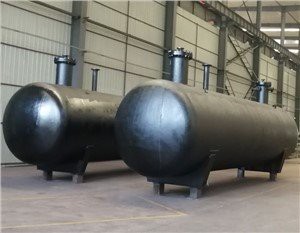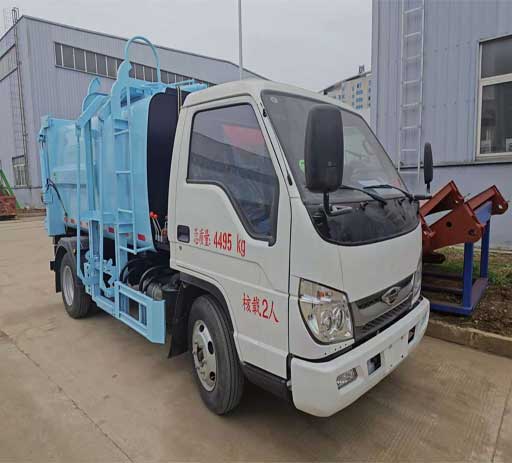Septic Tank Vacuum Pump: A Comprehensive Guide

Introduction
Septic systems play a crucial role in waste management for homes and businesses that are not connected to municipal sewer systems. At the heart of these systems is the septic tank, which collects and processes wastewater. Over time, the tank fills up with sludge and scum, necessitating regular maintenance and pumping. This is where a septic tank vacuum pump comes into play. This guide aims to provide you with all the necessary information about septic tank vacuum pumps, including their functionality, importance, and maintenance tips to keep your septic system running efficiently.
Understanding the Septic Tank System
The Components of a Septic System
A typical septic system consists of three main components:
- Septic Tank: A watertight chamber that receives wastewater.
- Drain Field: A network of perforated pipes buried in gravel or sandy soil, allowing effluent to be filtered and absorbed into the ground.
- Soil: Serves as a natural filter removing harmful bacteria.
How Does a Septic Tank Work?
When wastewater enters the septic tank, it undergoes separation into three layers: solid waste (sludge) settles at the bottom, lighter materials (scum) float on top, and the liquid effluent remains in the middle. The effluent then flows to the drain field for further filtration and absorption. When the solid waste accumulation reaches a certain level, a septic tank vacuum pump is required to remove it.

The Importance of a Septic Tank Vacuum Pump
What is a Septic Tank Vacuum Pump?
A septic tank vacuum pump is a specialized pump designed to remove sludge and scum from septic tanks. The pump creates a vacuum that draws out the layers of waste, ensuring the tank remains functional.
Why is Regular Pumping Necessary?
Failure to pump your septic tank regularly can lead to:
- Backups and overflows that can damage your property.
- Environmental hazards due to the dispersion of untreated waste.
- Expensive repairs or replacements of the septic system.
The American Society of Plumbing Engineers recommends pumping your septic tank every 3 to 5 years, depending on usage and tank size.
Types of Septic Tank Vacuum Pumps
Positive Displacement Pumps
Positive displacement pumps are commonly used for septic tank pumping. They draw waste into a chamber and then expel it through an outlet. These pumps are known for their reliability and ability to handle viscous materials.
Centrifugal Pumps

Centrifugal pumps use a rotating impeller to draw waste into the pump and expel it using hydraulic force. They are efficient for transferring liquids but may struggle with thicker sludge.
Diaphragm Pumps
These pumps utilize a flexible diaphragm to create suction and discharge waste. They are effective for transferring small volumes of sludge and are often used in portable pumping units.

How to Choose the Right Septic Tank Vacuum Pump
Factors to Consider
When selecting a septic tank vacuum pump, consider the following:
- Tank Size: Larger tanks require more powerful pumps.
- Sludge Consistency: Thicker sludge may need specialized pumps.
- Portability: For properties without easy access, portable pumps may be necessary.
- Power Source: Choose between electric and gas-powered pumps based on your location and requirements.
Practical Examples
If you have a 1,000-gallon septic tank, a typical positive displacement pump rated for 20-25 GPM (gallons per minute) would be effective. For thicker sludge, you might look into heavy-duty pumps with higher suction capabilities.
Operating a Septic Tank Vacuum Pump
Precautions to Take
Before operating the pump, ensure the following:
- Wear protective gear including gloves and goggles.
- Ensure good ventilation in the area to avoid toxic fumes inhalation.
- Check for any potential leakages around connections.
Step-by-Step Guide
- Position the pump at the septic tank access point.
- Connect hoses securely to prevent spills.
- Turn on the pump and monitor for signs of clogging.
- Once the tank is empty, remove hoses and clean the area.
Maintenance of the Septic Tank Vacuum Pump
Regular Inspections
Regular inspections can help identify issues before they become severe. Check the condition of the pump, hoses, and connections regularly.
Cleaning and Repairs
After every use, clean the pump components to avoid buildup and odors. Routine servicing every 6 months can also prolong the pump’s lifespan.
Understanding Costs Associated with Septic Tank Vacuum Pumping
| Service | Average Cost |
|---|---|
| Septic Tank Pumping | $200 – $600 |
| Pump Purchase | $500 – $3,000 |
| Regular Maintenance | $100 – $300/year |
Investing in a septic tank vacuum pump is generally more cost-effective than neglecting your system.
Common Myths About Septic Tank Vacuum Pumps
Myth 1: You Never Need to Pump Your Septic Tank
Many believe septic tanks are self-cleaning; however, regular pumping is crucial for long-term functionality.
Myth 2: All Pumps are the Same
Different pumps serve different purposes and selecting the wrong one can lead to inefficiency.
FAQs
What are the signs that my septic tank needs to be pumped?
Signs include slow drains, odors around the tank, and standing water in the drain field.
How often should I pump my septic tank?
Generally, every 3-5 years, but frequency may vary based on usage and tank size.
Can I pump my septic tank myself?
While it is possible, hiring a professional is recommended for safety and efficiency.
What happens if my septic tank is not pumped regularly?
Failure to pump can lead to backups, failures of the drain field, and expensive repairs.
How do I know what type of vacuum pump is best for my tank?
Consider your tank size, sludge consistency, and whether portability is a factor for your property when choosing.
Are there risks involved with using a septic tank vacuum pump?
Yes, risks include exposure to harmful waste materials, unpleasant odors, and the potential for component damage if not handled correctly.
